15 Density Science Experiments
Use these free science lessons, experiments, and activities to teach K-12 students about density.
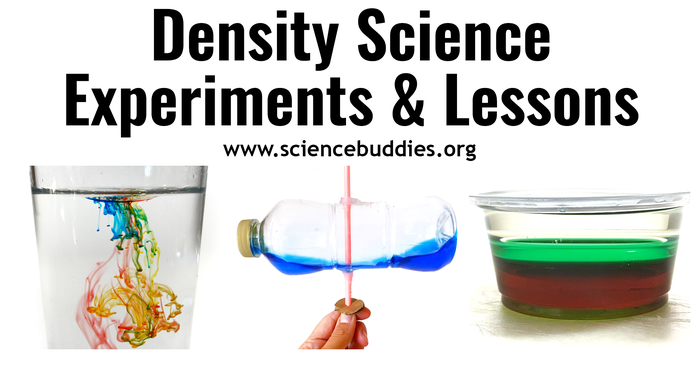
Sometimes students wrongly think that an object's density is the same as its weight or its mass. Instead, density refers to an object's mass in a given volume. Two objects that have the same shape and size (volume) but have a different mass (like two same-sized balls with different weights) have different densities. As a physical property of matter, density applies not only to solids but also to liquids and gases. Mathematically, density is expressed as mass divided by volume. This means that the more mass an object or substance has in a given volume, the more dense it is. An object's density depends on the mass, size, and arrangement of its atoms. Other factors that affect density are air pressure and temperature.
The free STEM lessons and activities below help students learn about density and how density as a property is related to how materials interact and how they fall, float, sink, or separate. By understanding the importance of density, students can make more accurate predictions for how materials will behave in certain scenarios, what materials are best suited for an intended purpose (such as an engineering project), how objects will sink or float, and more. For key terms to review with students, see the list of vocabulary words at the bottom of this resource.
To make it easier to locate resources to fit your curriculum, the lessons and experiments below have been grouped as follows:
Note: Science Buddies Lesson Plans contain materials to support educators leading hands-on STEM learning with students. Lesson Plans offer NGSS alignment, contain background materials to boost teacher confidence, even in areas that may be new to them, and include supplemental resources like worksheets, videos, discussion questions, and assessment materials. Activities are simplified explorations that can be used in the classroom or in informal learning environments.
Lesson Plans and Activities to Teach About Density
Density You Can See
When it comes to understanding density, being able to "see" the effects of density can be a useful starting point. The following experiments let students observe how different materials or liquids have different densities and what this means when it comes to how they interact with other materials and liquids.
1. Dancing Candy Hearts
In the Dancing Candy Hearts activity, students use a glass of carbonated water or soda to learn about carbonation, density, and buoyancy. Watching the candy hearts slowly rise and fall can be mesmerizing, but by the end of the experiment, students will be able to explain the science behind the movement of the candy. Questions: What will cause the candy to stop "dancing"? What controls the speed of the rising and falling of the candies? How does density explain what happens when the candy is first dropped into the water?
2. Underwater Color Explosions
In the Underwater Color Bursts activity, students use cooking oil, water, and food coloring to create colorful underwater fireworks. They'll learn about density, miscibility, and diffusion and see how these concepts explain how the food coloring moves through oil and through water. Questions: How does density contribute to the underwater fireworks? What does density have to do with the difference in what happens when you start with a cup of oil versus a cup of water?
3. Stacking Density Column
In the Investigate the Properties of Liquids lesson, students use the density of substances to create a "stack" of liquids, one on top of another, in a container. If the substances are arranged properly, the liquids will stack without mixing. Questions: In addition to density, what properties are important to know about the substances when making a density column? What happens if two substances have the same density? What can you add to a liquid to alter its density? What happens when you turn a density column upside down? (Note: Students can explore density columns with the Explore the Mixing Behavior of Liquids independent project. A related Stacking Liquids activity is available for a short, informal experiment. See also our "rainbow" variation in the 7 Rainbow Experiments for Science Class collection.)
4. Density and Falling Objects
In the Showing Science: Watch Objects in Free-Fall experiment, students experiment to see how density relates to the speed at which an object falls. Comparing objects that are similarly sized but have different densities, students investigate the relationship between density, gravity, and air resistance. This activity connects to classic experiments with free-falling objects (like the story of Galileo's Tower of Pisa experiment) and demonstrations of free-falling objects in a vacuum. Question: What happens if the height from which the objects are dropped changes? What forces play a role in the speed at which objects fall?
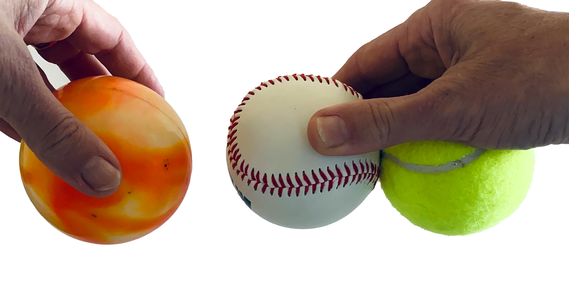
5. Density of Gases
In the How Heavy Is Your Air? activity, students experiment to see how different gases may also differ in density. Using balloons, students compare the density of carbon dioxide to the density of air, which is a mixture of nitrogen and oxygen gas. Question: What happens when the density of a gas is more or less than the density of the surrounding air?
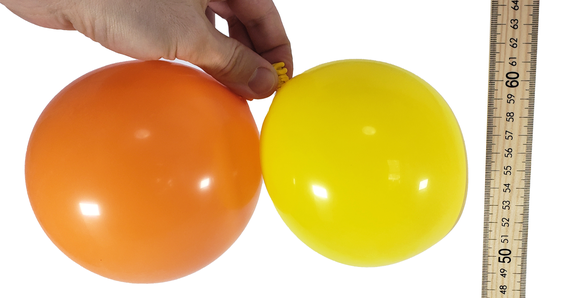
6. Bottle Centrifuge
In the Build a Bottle Centrifuge activity, students use a bottle to make a model centrifuge, a device that separates substances based on their density. In experimenting with the bottle centrifuge, students observe centripetal force as the bottle spins and the substances are pulled to the walls of the bottle at different rates. Questions: How are density, inertia, and Newton's first law of motion related to what happens in a centrifuge? What are examples of substances that are commonly separated by centrifuges in the world? What kinds of substances can not be separated effectively by a centrifuge?
7. Water Striders
In the Water Striders: Survival Adaptations lesson, students learn about water striders and observe how they appear to walk or skip along the surface of the water without sinking. What about their bodies contributes to this ability? What does density have to do with it? To explore, students build their own insects from pieces of wire and test to see which ones sink and which ones float. Be inspired! See how these students made and tested water striders of different sizes at home.
Buoyancy
Buoyancy refers to the ability of a submerged or partially submerged object to float in water, air, or another liquid. The net upward force on the object from the surrounding water, air, or liquid is dependent on both the density of the object and the density of the surrounding medium. In learning about Archimedes' principle, students observe buoyancy and can also experiment with the role of density.
8. Floating Eggs in Salt Water
How does tap water compare to salt water in terms of density? What happens when you put an egg in a cup of tap water? The average egg will sink. In the Salty Science: Floating Eggs in Water experiment, students add salt to water to change the density of the water. As the density of the water changes, they will observe an egg float instead of sink. Questions: How does density explain what students observe in this experiment? Why is salt needed to make the egg float?
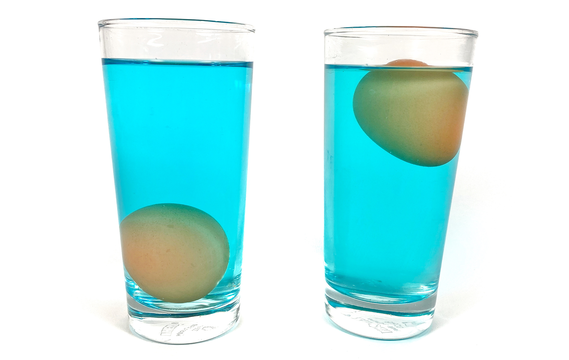
9. Cork Sailboat
In the Make a Toy Sailboat activity, students make simple toy sailboats from cork and then experiment to see how the design of a boat relates to how well the boat floats and stays upright. Both the center of mass and the density of the boat play a role in how the boat floats on water! Questions: Why does a boat need a low center of mass for stability? Not all boats are made out of light materials. How can boats that are made out of steel, a material that is denser than water, float?
10. Foil Boats
In the Aluminum Foil Boat Design: Surviving the Stormy Seas lesson, students make boats out of aluminum foil and explore how different designs help boats stay buoyant and stable even in waves. For a related activity that explores boat design (without the waves), see the How Much Weight Can Aluminum Foil Boats Float? activity.
11. How Do Scuba Divers Stay Neutrally Buoyant?
In the Buoyancy Bull's-Eye lesson, students use toy action figures to explore buoyancy, forces of motion, and the role density and mass play in how an object sinks, floats, or hovers. As they investigate these concepts, students are challenged to use assorted materials to make their action figures neutrally buoyant like a scuba diver. Questions: What does it mean to be "neutrally buoyant"? How can a scuba diver change their buoyancy when in the water?
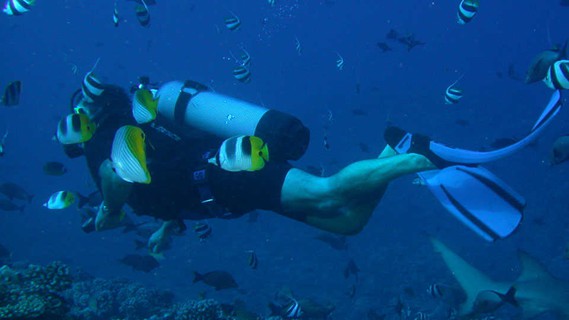
"Diver and Lemon shark" © 2004 Hpm~commonswiki
Density in Earth Sciences
The densities of water, air, and other substances play an important role in processes on Earth. Density differences in air and water are a major driver of ocean currents and certain weather patterns. By experimenting with liquids and air of different densities, students will also gain an understanding of how fragile certain processes on Earth are.
12. Slow Waves
In the Waves in Slow Motion activity, students make waves in a bottle and investigate how the density of water compared to the atmosphere (or to oil, in the model) creates the movement of waves.
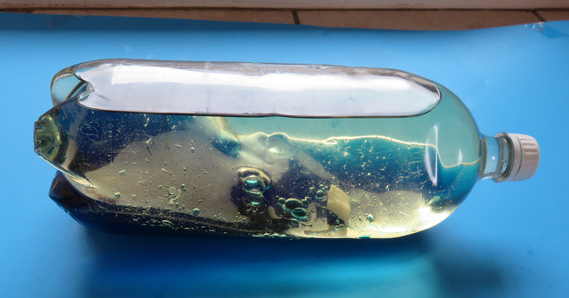
13. Ocean Circulation
In the Oceanic Circulation: What Keeps the Ocean in Motion? lesson, students model ocean currents with cups, water, and food coloring. Water in the ocean is constantly in motion due to waves and currents, but what does temperature and salinity have to do with this motion? Question: What role does density play in the movement of ocean water? For additional resources to teach about water, see 11 Activities to Teach Water Cycle Science.
14. Balloon Barometer
In the Measure the Pressure activity, students learn about atmospheric (air) pressure and the function of a barometer. Making a model barometer using a balloon and a glass jar and manipulating the atmospheric pressure inside the jar, students observe how the barometer works to show changes in air pressure. Question: How is air pressure related to density? How are changes in air pressure sometimes related to short-term changes in weather?
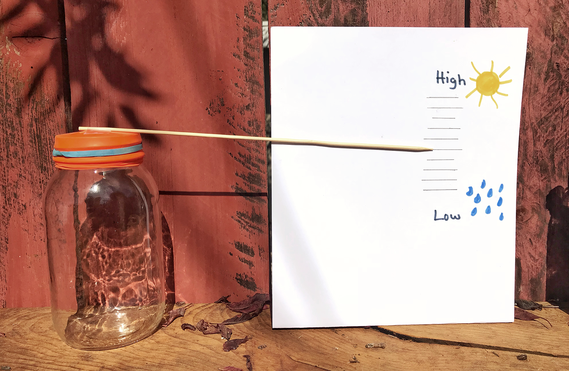
15. Sea Level & Climate Change
In the Climate Change and Sea Level Rise lesson, students explore the impact of climate change and melting ice on sea level. Through hands-on modeling, they experiment to see and explain what happens when land ice and sea ice melt. Question: How does the density of water change when it freezes? Does floating ice contribute to sea level changes?
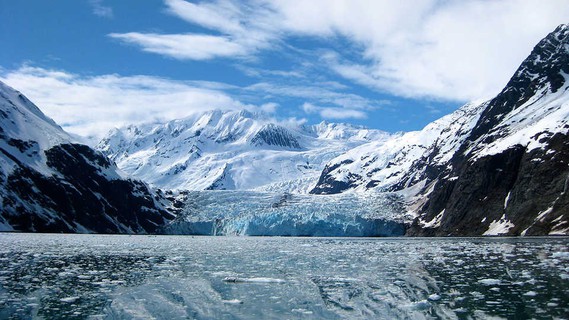
"Surprise Glacier" © 2010 Jiuguang Wang
Vocabulary
The following word bank contains words that may be covered when teaching about density using the lessons and activities in this resource.
- Acceleration
- Air pressure
- Air resistance
- Archimedes' principle
- Atmosphere
- Atom
- Buoyant force
- Buoyancy
- Center of mass
- Centrifuge
- Centripetal force
- Climate change
- Currents
- Density
- Diffusion
- Displacement
- Force
- Gas
- Gravity
- Inertia
- Liquid
- Mass
- Miscible
- Newton's first law of motion
- Salinity
- Sea level
- Vacuum
- Velocity
- Volume
- Weight
Thematic Collections
Collections like this help educators find themed activities in a specific subject area or discover activities and lessons that meet a curriculum need. We hope these collections make it convenient for teachers to browse related lessons and activities. For other collections, see the Teaching Science Units and Thematic Collections lists. We encourage you to browse the complete STEM Activities for Kids and Lesson Plans areas, too. Filters are available to help you narrow your search.
Categories:
You Might Also Enjoy These Related Posts:
- Teach Genetics and Heredity with Free STEM Lessons & Activities - Genetics Science Projects
- 25+ Robotics Projects, Lessons, and Activities
- 15 Density Science Experiments
- Teach Chemical Reactions - 20+ Chemistry Lessons and Activities
- Forces and Laws of Motion Lessons
- Mars Rover Landing: Space Science & Mars STEM Lessons and Activities
- 26 Science Projects and Experiments To Teach About Types of Energy
- 13 Lessons to Teach About the Chemistry of Mixtures and Solutions

















